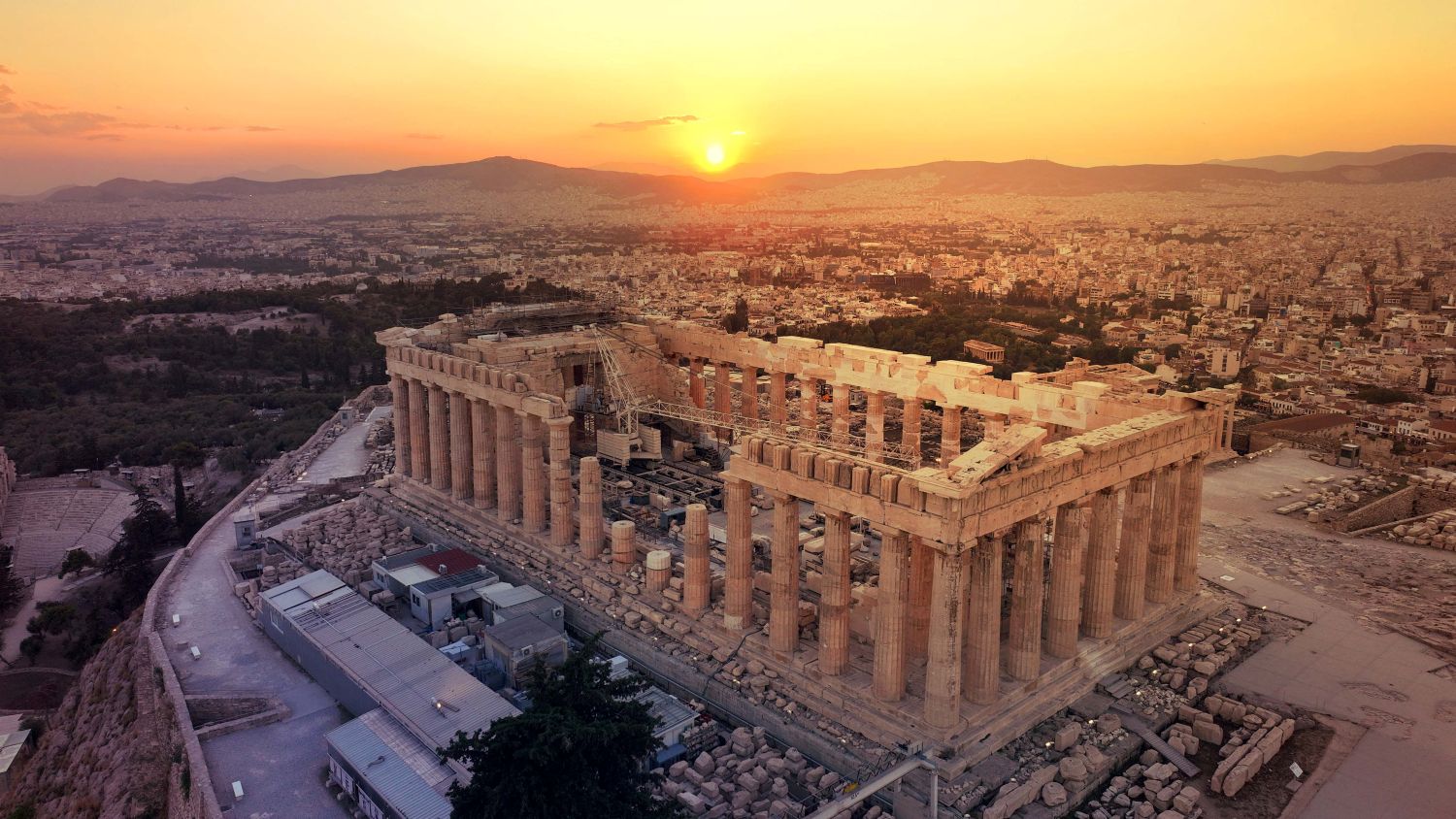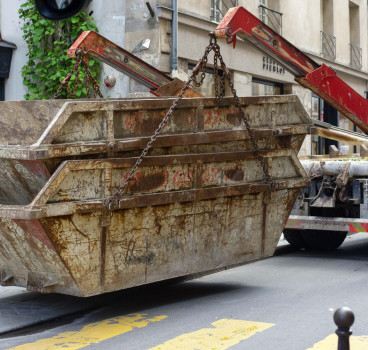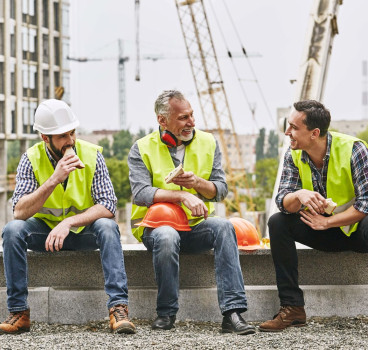How titanium and modern construction are preserving history at the Acropolis
The Acropolis of Athens, is one of the world’s most iconic landmarks. Over 2,500 years old, this UNESCO World Heritage Site has weathered wars, natural disasters and centuries of wear and tear. At one stage it appeared that the monument would be lost for ever, but fast forward to the 21st century and we can see how modern technology is playing a pivotal role in safeguarding its legacy for future generations, blending cutting-edge engineering with traditional craftsmanship.
The Acropolis, meaning "high city" in Greek, is a limestone plateau rising above Athens. Its most famous structure, the Parthenon, was built between 447 and 432 BCE to honour the goddess Athena. The Acropolis also includes other architectural masterpieces like the Erechtheion, the Temple of Athena Nike and the Propylaea.
Over the centuries, the Acropolis suffered significant damage. It endured transformations into a church, a mosque and even a gunpowder storage facility, which led to catastrophic explosions during conflicts. The combined effects of pollution, weathering and previous restoration efforts using incompatible materials have further compromised its structural integrity.
Proper restoration work gained momentum in 1975, following the recognition of damage caused by earlier restoration techniques that used less durable materials. Titanium became the preferred material of choice because of its compatibility with marble and its resistance to corrosion. These efforts have been ongoing, with the most recent phases of restoration incorporating modern techniques such as 3D modelling to plan precise interventions.
The use of titanium is part of a comprehensive restoration strategy to preserve the site's integrity while ensuring its safety for future generations. This approach reflects an interdisciplinary collaboration involving archaeologists, engineers and conservators to maintain the Acropolis's status as a UNESCO World heritage site
Restoring the Acropolis is far from a straightforward. Retaining as much of the ancient marble as possible, is a key objective. Ensuring the monuments can withstand future earthquakes and other environmental challenges, is equally important. Making repairs seamless so the new elements do not detract from the ancient aesthetic and ensuring that any restoration method will allow future generations to modify or remove additions without harming the original structure, also have to be considered.
The modern miracle material
This is why titanium has emerged as a game-changer in the restoration of the Acropolis. It is highly resistant to corrosion, ensuring that it can withstand the test of time without weakening or reacting with the marble. Despite being incredibly strong, titanium is also lightweight, minimising the stress it adds to ancient structures.
Titanium can be machined with precision, allowing it to blend seamlessly into the ancient marble without causing damage and unlike older methods, such as iron clamps that corrode and expand, causing cracks, titanium is a long-term solution that does not degrade.
In the restoration process, titanium rods are used to stabilise columns and other structural elements. These reinforcements are inserted into carefully drilled holes within the marble blocks, anchoring them securely while remaining invisible to the naked eye.

Another revolutionary tool in the restoration of the Acropolis is 3D modelling. This technology allows for unparalleled precision and planning in addressing the site’s challenges. Using laser scanning and photogrammetry, restoration teams create highly detailed digital replicas of the Acropolis. These models capture every crack, curve and crevice, providing a precise record of the site's current condition.
The 3D models are used to identify areas of damage that are invisible to the naked eye. This helps prioritise restoration efforts and ensure no detail is overlooked. Before any physical work is undertaken, restorers use the digital models to simulate potential interventions. This minimises the risk of errors during the restoration process. The 3D models also serve as valuable tools for researchers and educators, offering a virtual way to explore and study the Acropolis without causing further wear and tear to the site.
The Parthenon, the centerpiece of the Acropolis, has been a focal point of restoration efforts. Much of its damage stems from the 17th-century explosion and subsequent ill-advised repairs in the 19th century using iron clamps. These clamps corroded over time, causing further cracks in the marble.
In the latest restoration efforts, damaged blocks were carefully dismantled and cleaned, titanium reinforcements replaced the old iron clamps, 3D modelling was employed to ensure each piece fitted perfectly back into its original position, much like a giant jigsaw puzzle and where marble fragments were missing, compatible Pentelic marble (from the same quarry as the original) was used for repairs. This meticulous approach has allowed the Parthenon to regain its structural integrity while maintaining its ancient grandeur.
Combining ancient techniques with modern science
While modern materials and technologies play a crucial role, the restoration process also honours traditional craftsmanship. Skilled artisans use tools and methods similar to those employed by ancient Greek builders. The seamless integration of old and new is a hallmark of the Acropolis restoration project.
The methods used in restoring the Acropolis are setting benchmarks for heritage preservation worldwide. The use of durable, non-reactive materials like titanium ensures that restorations are sustainable and long-lasting. Advanced technologies like 3D modelling reduce the margin for error, preserving the authenticity of the site.
The restoration of the Acropolis is more than just a local effort; it’s a global endeavour with far-reaching implications. By combining cutting-edge engineering with traditional methods, the project demonstrates that historical preservation and modern innovation can go hand in hand.
From Rome's Colosseum to Egypt's pyramids, lessons from the Acropolis restoration are inspiring similar efforts worldwide. These projects not only protect physical structures but also preserve cultural identity and shared human heritage.
The restoration of the Acropolis is still an ongoing process, but as technology evolves, new methods and materials will undoubtedly enhance preservation efforts further. Drones, artificial intelligence and even nanotechnology are being explored as potential tools for the future of heritage restoration. What remains constant, however, is the dedication of the teams working tirelessly to ensure that monuments like the Acropolis continue to inspire generations to come.
Additional Articles

Why everyone has a favourite skip and what it says about you
In construction, there are two universal truths – tea, of course, is essential and believe it or not, everyone - whether they are prepared to admit it - has a favourite skip. It may sound strange,...
Read moreThe cultural significance of the bacon roll in UK construction
Walk onto any construction site in the UK at 7:30am and you’ll quickly discover that the most important piece of equipment isn’t a digger, a drill or a laser level. It’s a humble, foil-wrapped,...
Read more

Check out the odd things unearthed on construction sites
Dig deep enough on a construction site and you might be amazed at what you find. In fact, if there is anywhere destined to uncover hidden treasures, you are in the right place. Large-scale ground...
Read more